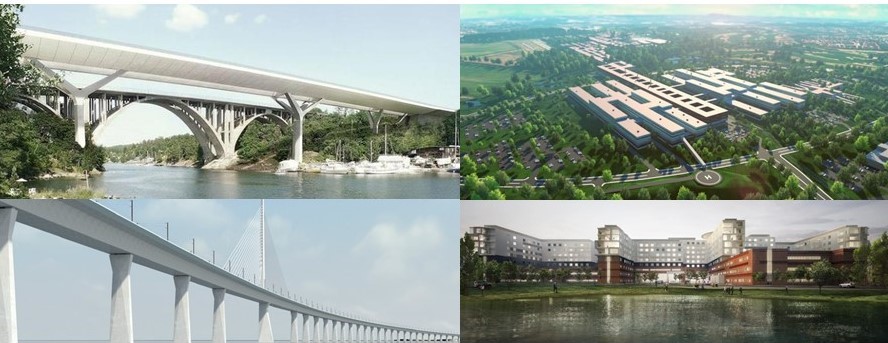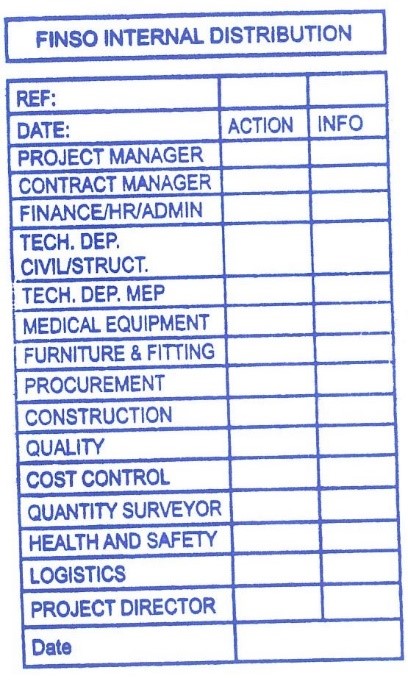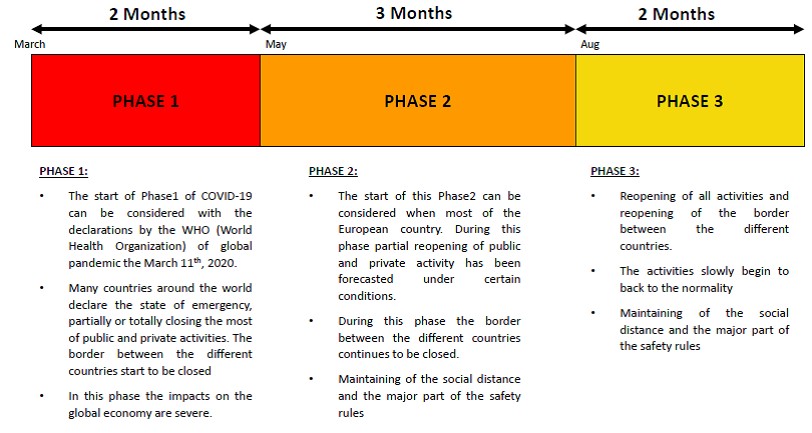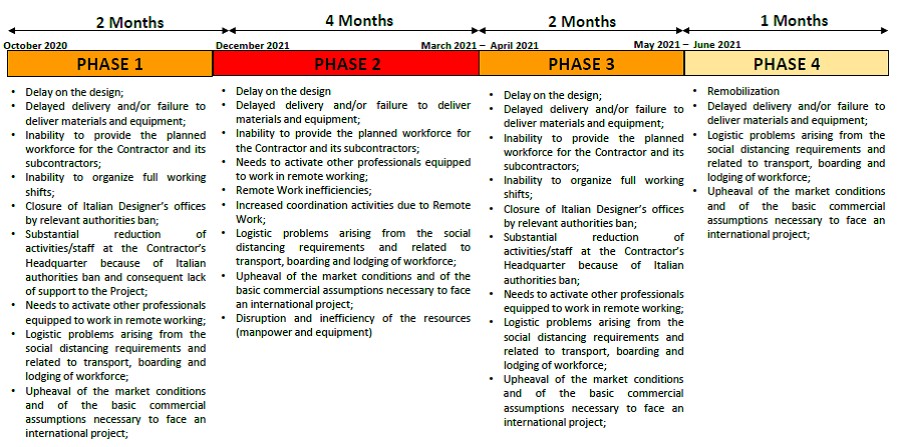AUTHOR: Ing. Alessandro Beretta
TUTORS: Ing. Giovanni Franchi
INTERNSHIP:
MASTER: Master in “Project and Contract Management in Construction Works” a.a 2020/21
Le metodologie di Project Management sono oggi giorno continuamente studiate ed uniformate, con una serie di corsi e certificazioni disponibili, sempre più richieste dalle imprese di costruzioni per il loro personale.
Attraverso l’analisi di quattro progetti sviluppati nell’area scandinava, vengono analizzati i diversi approcci al Project Management ed al Contract Management in funzione della tipologia del Contratto e del Modus Operandi del Cliente.
I progetti analizzati, relativi alla costruzione di un ponte in Svezia, di un ponte e di due ospedali in Danimarca, seppur basati sulle stesse Condizioni Generali AB caratteristiche nell’area (ABT93 in Danimarca e ABT06 in Svezia), equiparabili ai FIDIC Silver Book, Turnkey Design & Build Contract, presentano caratteristiche profondamente diverse in funzione degli emendamenti apportati a queste Condizioni Generali attraverso le singole Condizioni Particolari emesse dall’ente appaltante.
Il Project Management viene sviluppato attraverso le principali attività di gestione delle singole commesse: la progettazione, il procurement, la pianificazione e la comunicazione, quest’ultimo aspetto fondamentale per una buona gestione della commessa.
La comunicazione viene sviluppata in particolare con la gestione delle riunioni e delle informazioni in generale, sia interne che esterne, nonché della reportistica, anche questa sia interna che esterna.
La comunicazione deve essere tempestiva, essenziale, mirata ed efficace, e la sua gestione è uno dei ruoli più significativi che possa essere svolto sotto la capacità del Project Manager.
Nell’analisi di questi aspetti vengono poi analizzati elementi tipici delle commesse, sviluppati descrivendone le relative peculiarità: la scelta tra fornitori e subappaltatori locali od esteri, il trattamento contrattuale delle condizioni metereologiche avverse, la gestione delle mail e le clausole relative alla promozione della formazione.
L’aspetto de Contract and Claim Management viene inoltre analizzato attraverso la diversa gestione contrattuale delle commesse, con particolare riferimento alle gestione delle variazioni e dei loro impatti contrattuali, alla procedura di notifica dei claim ed ai loro impatti, inclusi i claim notificati a seguito della pandemia generata dal virus COVID-19, gestita dai paesi scandinavi molto diversamente rispetto al resto d’Europa.
Il diverso approccio contrattuale da parte delle varie stazioni appaltante, seppur comunemente improntato a trattare la pandemia da COVID-19 come causa di Forza Maggiore come da istruzioni governative, e l’assenza di legislazione specifica durante la prima ondata della pandemia, ha costretto i vari Project Manager ad adattare la strategia e la documentazione presentata, nonché le tempistiche di presentazione delle richieste di estensione temporale e di rimborso delle spese addizionali sostenute.
Il comune approccio tenuto dalle diverse commesse, introducendo un “what if scenario” che ipotizzava uno sviluppo della pandemia fino al ritorno alle stesse condizioni presente al momento dell’offerta, ha permesso di poter presentare, senza alcuna possibilità di contestazione da parte delle stazioni appaltanti, un secondo claim relativo alla seconda ondata della pandemia da COVID-19, indipendentemente dal fatto che siano stati sottoscritti accordi sotto forma di addendum al contratto relativamente alla prima ondata.
Altro importante Claim notificato in particolare da due delle quattro commesse, è quello relativo all’anomalo incremento dei prezzi dei materiali da costruzione che ha cominciato a verificarsi fin da fine 2020, a seguito delle prime “riaperture” post-pandemia. Questi aumenti anomali e repentini hanno interessato in primis i metalli, particolarmente l’acciaio, e successivamente la maggior parte delle materie prime.
Essendo già prevista nei contratti sottoscritti delle clausole di revisione prezzi, con degli indici prestabiliti, i claim sono stati notificati facendo riferimento ad un’inefficienza della formula revisionale.
Gli esempi e le analisi riportate evidenziano come, seppur sia utile e necessario avere delle linee guida e dei principi dal seguire nelle attività di Project e Contract Management, queste non sono perseguibili in maniera avulsa dal contesto, come se esse fossero fini a se stesse, ma devono essere adattate al progetto come una seconda pelle.
FOR INTERNATIONAL STUDENTS:
Project Management methodologies are nowadays continuously studied and standardized, with a series of courses and certifications available, increasingly requested by construction companies for their staff.
Through the analysis of four projects developed in the Scandinavian area, the different approaches to Project Management and Contract Management are analyzed according to the type of Contract and the Client’s Modus Operandi.
The projects analyzed, relating to the construction of a bridge in Sweden, a bridge and two hospitals in Denmark, albeit based on the same AB General Conditions typical of the area (ABT93 in Denmark and ABT06 in Sweden), comparable to the FIDIC Silver Book, EPC/Turnkey Contract, have very different characteristics due to the amendments made to these General Conditions through each of Special Conditions issued by the Employer.
The Project Management is developed through the main management activities of each project: design, procurement, planning and communication, the latter is the fundamental aspect for a good management of the projects.
The communication is developed in particular with the management of meetings, information in general and reporting, both internal and external.
The Communication must be timely, essential, targeted and effective, and its management is one of the most significant roles that can be performed under the ability of the Project Manager.
In the analysis of these aspects, typical elements of the projects are then analyzed and developed by describing their peculiarities: the choice between local or foreign suppliers and subcontractors, the contractual treatment of adverse weather conditions, the management of emails and the clauses relating to the promotion of training.
The aspect of Contract and Claim Management is also analyzed through the different contractual management of the project, with particular reference to the management of variations and their contractual impacts, the claim notification procedure and their impacts, including claims notified following the COVID-19 pandemic, managed by Scandinavian countries very differently from the rest of Europe.
The different contractual approach by the various Employers, albeit commonly aimed at treating the COVID-19 pandemic as a cause of Force Majeure as per government instructions, and the absence of specific legislation during the first wave of the pandemic, forced the Project Managers to adapt their strategy and the documentation presented, as well as the timescales for submitting requests for Extensions of Time and reimbursement of additional costs incurred.
The common approach was taken in the various projects, introducing a “what if scenario” that assumed a development of the pandemic until the return to the same conditions present at the time of the offersubmission, made it possible to present, without any possibility of dispute by the Employer, a second claim relative to the second wave of the COVID-19 pandemic, regardless of whether agreements have been signed in the form of an addendum to the contract relating to the first wave.
Another important claim notified in particular by two of the four projects was due to the abnormal increase in the prices of building materials which started at the end of 2020, following the first post-pandemic “reopening”. These abnormal and sudden increases had primarily affected metals, particularly steel, and subsequently most of the raw materials.
Since price revision clauses were already provided in the signed contracts, under defined indices, the claims were notified by referring to an inefficiency of the price increase mechanism.
The examples and analyzes reported show how, although it is useful and necessary to have guidelines and principles to follow in Project and Contract Management activities, these cannot be pursued outside the context, as if they were ends in themselves, but they shall be adapted to the project like a second skin.




